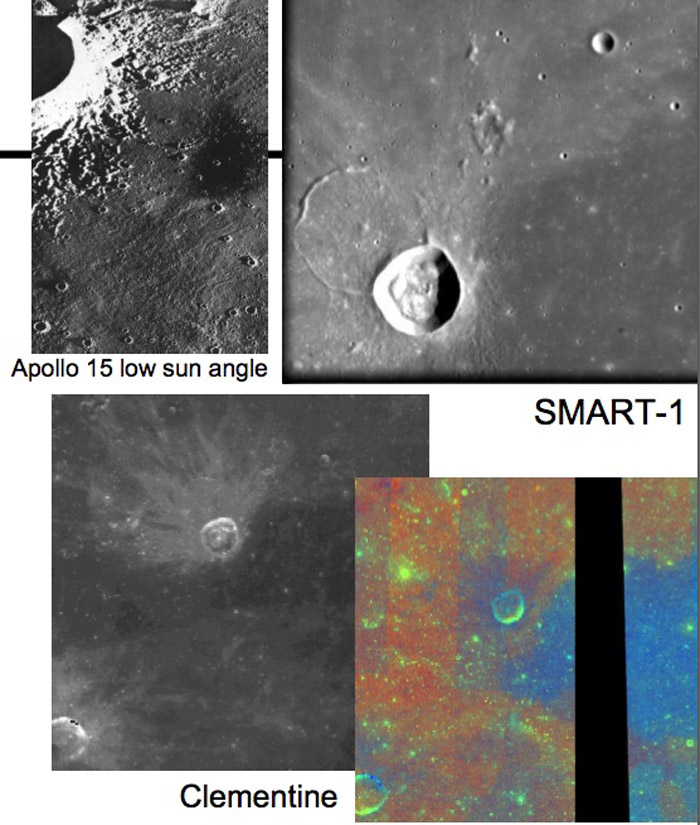January 10, 2009
L-ISCT 2

figure from Pieters et al Powerpoint presentation (pdf)
With the plethora of spacecraft recently, currently or planned to orbit the Moon there is an opportunity to make comparisons of many different but often similar instruments. A group of international lunar scientists has selected eight targets on the Moon to be used for coordinated science and instrument calibration for such orbital missions. The Lunar International Science/Calibration Targets are the Apollo 16 highlands, Lichtenberg, Hadley Rille, South Pole-Aitken Basin, Tycho, south polar shadows, Schrödinger and the Mare Serenitatis color boundary. All of these nearside targets except Lichtenberg (the second item on the L-ISCT list) are members of the Lunar 100! What makes the Lichtenberg area interesting is the interaction of the crater and its rays with lava flows. US Geological Survey mappers in the 1960s recognized that rays on the eastern side of Lichtenberg are covered by lavas. This is an uncommon condition because most mare lavas erupted about 3 to 3.5 billion years ago, and craters tend to lose their rays in about a billion years. Crater counts suggest that indeed, the dark high-Titanium basalts overlying Lichtenberg's rays are about one billion years old - amongst the youngest on the Moon. I am forced to use SMART-1, Clementine and Apollo images of Lichtenberg because I am unaware of any excellent high resolution shots from the Earth.
Chuck Wood
Related Links
Rükl plate 8
Carle Pieters et al scientific article (pdf)
Yesterday's LPOD: Interloper
Tomorrow's LPOD: 木村
COMMENTS?
Register, Log in, and join in the comments.



